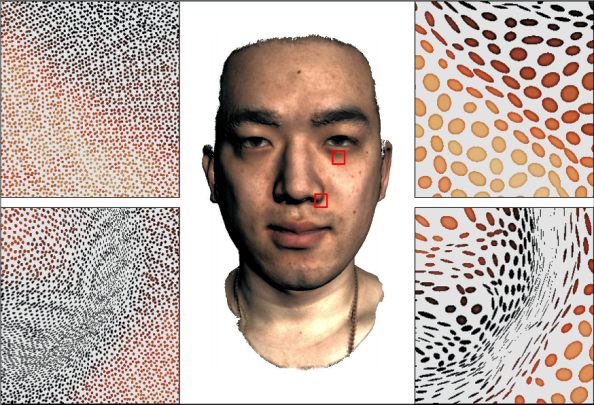Adaptive surface splatting for facial rendering
H. Kim, A. C. Oztireli, M. Gross, S. ChoiComputer Animation and Virtual Worlds, vol. 23, no. 3-4, pp. 363-373
Abstract
Recent advances in facial scanning technology provide highly detailed faces, including ?ne wrinkles. However, because of the increasing complexity of the resulting models, it is necessary to reduce the amount of data while preserving small- scale facial features. In this paper, we propose a new adaptive surface splatting method to reduce the number of splats by optimizing the size and shape of splats using geometric and color information. Using the optimized splats, we can improve the rendering quality, especially in the visually sensitive feature areas. Our adaptive surface splatting is very effective to render massive facial data on tablet PCs or smartphones.Overview
We propose a new surface splatting method for adaptive simplification and high-quality rendering of point-sampled surfaces. The main features of our algorithms are as follows: first, our approach directly works on point-sampled surfaces without any connectivity information between points. In contrast to previous point-based approaches, we are not focusing only on geometric information but also consider texture and facial features when generating adaptive samplings of the models. Second, we use a splat-based representation. Splat shapes are computed on the basis of the same measures used for the sampling stage, and thus they are well adapted for the preservation of important features using the resampled data set.
Results
To test usage of the massive facial data we have on tablet PCs or smartphones, we rendered the data using our adaptive surface splatting with different number of splats. Figure 2 shows that our method preserves small-scale facial features even after drastic simplification. Figure 2(a) is the rendering result using the original dataset. Figures 2(b, c, and d) are the results after 50%, 81%, and 97% simplification, respectively. Figure 3 illustrates the original point distribution and the shape, size, and distribution of splats after splat optimization.




